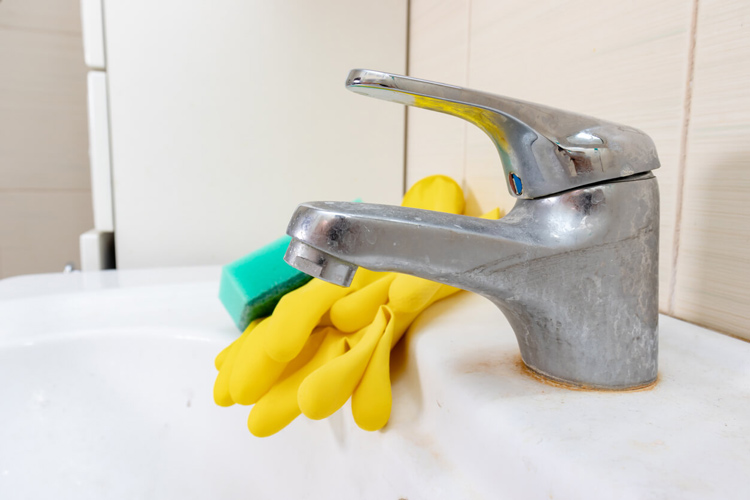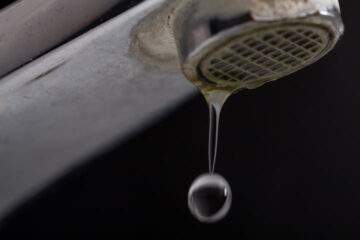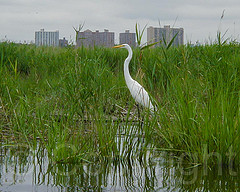The Many Benefits of Having a Water Softener – Get Rid of Iron and Other Minerals

Have you checked the chemical levels in your water lately? Chemicals and minerals get into the water supply, and without the proper equipment, your water could be doing more harm than good. The recommended level of iron in water is 0.3mg/L. Between iron and other minerals, you may have issues with household appliances like your water heater, the washer, and the dishwasher.
The Dangers of Iron in Your Water
Excessive iron in drinking water can harm the body. Heavy minerals can damage healthy skin cells, causing early wrinkles. Iron levels that are too high can damage your internal organs. Chemochromatosis can develop from high iron content and can damage the liver, heart, and pancreas.
Exposure to too much iron can result in diabetes, lowered sex drive, and heart or liver failure.
Iron can leave a residue that builds up and clogs the pipes, resulting in plumbing issues. Additionally, excessive iron can leave a metallic taste in your food or drinks.
If absorbed by your hair, it can cause your hair to develop a darker discoloration and become dry, brittle, and have a metallic odor. Massive amounts can tint lighter hair to a shade of orange or rusty shades. It can clog your pores, leaving you with acne or dry skin problems, like eczema.
Water with too much iron can leave reddish-brown stains in the bathroom on the fixture. And it’s not just in the bathroom – it can also reduce clothing quality and cause colors to fade.
Some of the Symptoms of Iron Poisoning:
- Fatigue
- Abdominal pain
- Joint pain
- Weakness
- Nausea/Vomiting
Why You Need a Water Softener
A water softener is a filtration system that removes minerals from your water via ion exchange. With a water softener, you can:
- Help keep your pipes clog-free
- Have streak-free and stain-free dishes
- Have a shower curtain and bathing area that doesn’t build up scum
How Does it Work?
Water softeners use ion exchange to eliminate minerals from the water before it makes it into your home. Inside the softener, there are resin beads (inside the mineral tank) charged with a sodium ion with a negative charge (anion). The minerals have a positive charge (cation). The two oppositely charged ions are attracted to one another, which is how the exchange process works.
The negatively charged resin beads grab hold of mineral ions and remove them from the water. When the bead has the mineral ion, the sodium ion gets released, sending softened water flowing to your home.
Hard water is not an issue that goes away on its own. It causes rising costs in the future. Remember that hard water also affects appliances like water heaters, which can need repair after so many minerals get deposited inside it, cost hundreds of dollars to repair, and require you to do routine maintenance.
Although water softeners can be expensive, it can save you money in the long run.
You will have better quality water that won’t dry out your skin, stain different surfaces all over the house, and you can rest assured that drinking your water is safe and healthy. Water softeners have low operational costs from month to month. All you have to do is replenish the brine tank with salt every month.
Install Your New Water Softener in 7 Easy Steps:
1. Position the water softener – The water supply should connect via the inlet. The outlet should be facing toward the hot water appliances.
2. Turn off your water at the mainline – This is to prevent leaks during the installation process. Make sure you turn off the water heater’s line and the electricity that goes to it.
3. Drain your pipes – Open faucets or the ones on the bottom floor to make sure water exits through your home supply piping.
4. Cut into the main water supply line – cut into the main water leading into the supply line.
5. Measure, cut, and put together the pipes – Measure, cut, and fit your pipes before attaching any pipes to the softener.
6. Put a clamp on the drain hose – The water softener needs to be emptied of the brine solution. Clamp the drain hose and send it into the dedicated drain.
7. Connect the tube for overflow – This is an extra precaution to ensure the brine tank doesn’t flood or overflow during this process.
The good news is, you won’t have to replace your water softener for about 15 – 20 years, so it’s an investment that is well worth making. If you are interested in providing the best quality water for your home, contact us.



